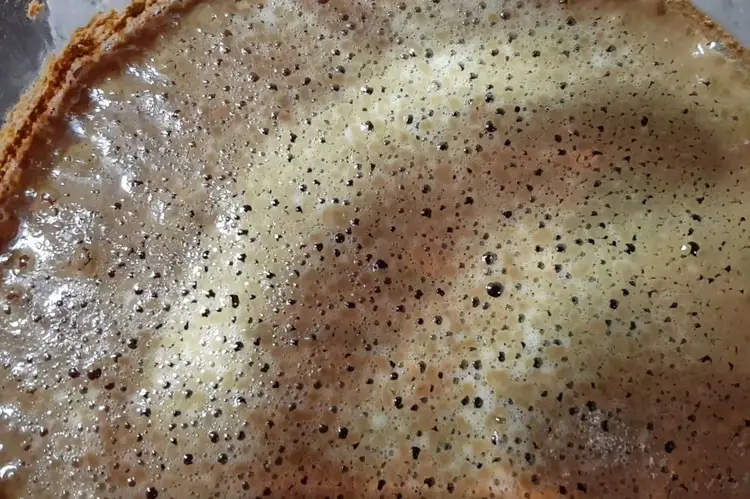Fermentation is the exciting part of beer making. It is where all the action happens. For ales it lasts 7-14 days on average. For lagers, much longer, 21-40 days. Belgian yeasts are also unique organisms and their fermentation can last 14 days to 6 months…yes, I know. When exactly is it finished?
Fermentation is finished when it ceases to off gas. The airlock is still and has reached equilibrium. If you brew in glass, look at the beer, the yeast ceases swimming and flocculates (settles) on the bottom. Pull a sample and taste it. Time to think about packaging.
Fermentation: a brief overview
Fermentation is the chemical process that makes beer, wine and is even the foundation of hard spirits.
It occurs when yeast (a single-celled living fungi) is introduced to sugar and begins to metabolize it (consume and transform).
The primary by-products of fermentation are two- that is carbon-dioxide (CO2 gas) and ethyl alcohol.
We are most interested in the ethyl and if we manage it just right, we can trap the CO2 in our bottles or kegs and naturally carbonate our beer. (this is an advanced method discussed elsewhere here)
Beer yeast is a unique strain (type) and since the late 19th century has been isolated and used exclusively for brewing beer.
There are over 150 naturally occurring pure yeasts in the world and we use two for brewing.
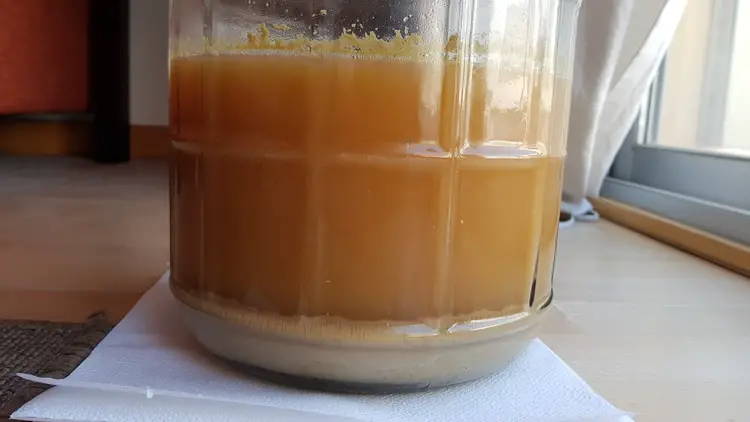
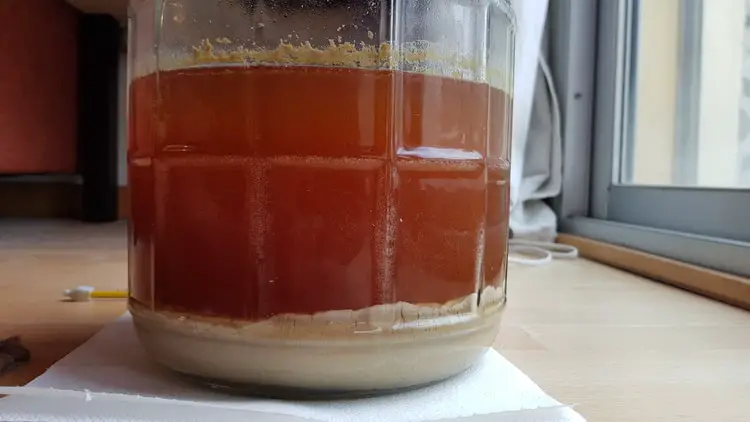
Ales
Saccharomyces cerevisiae is ale yeast, ferments warm and is top fermenting, meaning the yeast collects and multiplies on top of the beer during fermentation.
It works best at 62-68° F (16-20° C) and finishes quickly, typically in 7-14 days.
Ales are characterized by a full-body, often hoppy and dark, with a fruity nose due to hops and esters (aromatic by-products of fermentation) desirable in controlled amounts.
Lagers
Saccharomyces pastorianus is lager yeast and ferments slower and cooler, between 40-52° F (4-11° C).
It works from the bottom of the vessel and takes much longer to ferment, likely three to six weeks to finish.
It has a neutral aroma and improves the beer with age.
Utilizing blow-off to observe fermentation
The best method for observing beer is to ferment in glass carboys.
You could use plastic ones but even plastic is permeable to O2 over time.
The mouth of a carboy is about 1.5” wide.
A good method for primary fermentation is to use a hose with a 1.5” outside diameter and push it into the bottles mouth.
The other end goes into a jar of water, creating your own airlock.
As head space in a carboy is minimal this is likely a necessity.
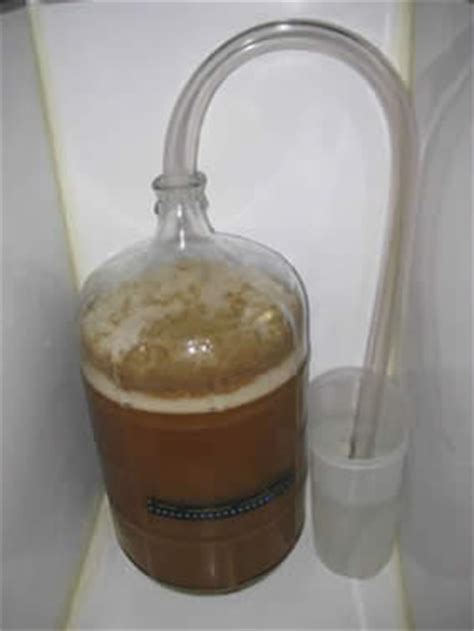
It takes 12-24 hours for yeast to go through respiration (absorption of O2 and multiplication).
It will form a bed on the bottom of your carboy.
When the yeast becomes active, especially ale yeast, it swims, spirals and dives.
It forms a dense rocky head on the top of the beer.
Healthy yeast could be scooped off and used for other batches if you are using a bucket.
Foam, hops, proteins, and live and dead yeast cells will foam out of your tube and into your jar.
Unfortunately, if the fermentation is too vigorous, you can lose precious beer, but it is a small price to pay for a cleaner beer.
This activity will last for three to four days.
There would be no need to take a gravity reading here.
Switching to and watching the airlock
After primary fermentation subsides, the blow-off ceases and the rocky head becomes a thinner layer of foam.
Take out the vinyl hose and use an airlock instead.
The beer may still be quite active and may shoot streams of bubbles through or just 1-2 per second.
Secondary fermentation will continue for 4-7 days or more, depending on temperature, yeast strain and original gravity.
Observe the yeast – the clues that tell
There should still be yeast swimming around but in much smaller pieces, and slower.
Also, groups cells will surface and dive.
They float from the bottom to the top and down again.
Check out the activity happening in the fermenter after 12 hours :
A thick creamy slurry forms on the bottom with a 1-2” band of cells attached to the glass above the yeast bed.
The beer will be hazy but noticeably clearer.
Light will begin to pass through the glass.
If you are fermenting in plastic, that is fine too.
I always recommend glass because it is non-permeable, and you can directly observe your beer.
Buckets, often about 7.5 gallons will leave you with a lot of head space.
Blow-off tubes are unnecessary or impractical.
There is O2 in the head space of the bucket which theoretically could endanger your beer, however, the yeast will emit CO2 once it enters its anaerobic phase and push all the O2 out.
Also, when fermentation is complete, yeast has a built-in defense mechanism wherein it forms a thin skin over the surface of the beer protecting it from O2 contamination.
Taste your beer
After 10-14 days, your beer has come to be nearly at rest.
In this case, let’s take an American Pale Ale as an example, OG 1.048, not too strong and not too light.
The airlock bubbles have diminished to one every 3-4 seconds, or perhaps your airlock has become completely still.
The water in the airlock is completely level, neither pushing nor pulling gas.
As you observed a healthy, even rigorous fermentation, the process is complete.
I used a turkey baster for sampling – a white vinyl tube tapered at the end with a rubber ball.
Draw out three to four ounces in a small thin glass.
Look at it, smell it, taste it.
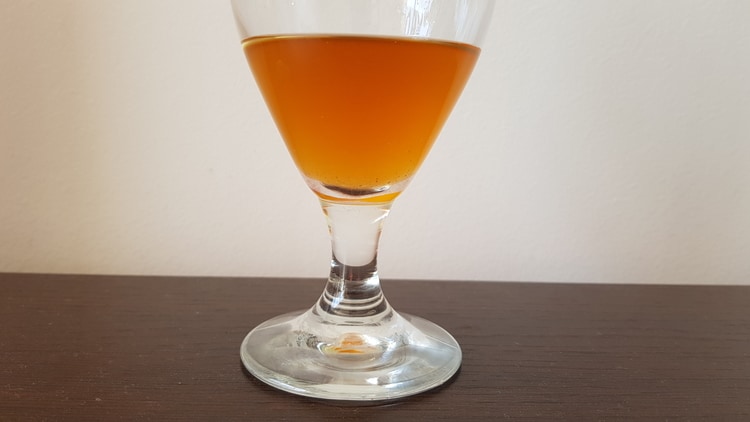
Is it still sweet or malty and slightly dry?
Is it too cloudy or just a bit hazy?
Does it taste like beer or malt vinegar?
Trust yourself.
You know what beer tastes like.
It will be a little lifeless, still, flat if you prefer, as it has no CO2 in solution.
That will come later.
Keep in mind that the hop flavor will be subdued, as the malt profile comes forward in ambient beer.
So, if it tastes a little sweet, not to worry. If it tastes good, then it is done, simple as that.
Secondary fermentation and racking
I am a strong proponent of racking beer.
This helps clarify, leaves behind the dead yeast cells and fermentation detritus.
It also guarantees that only the healthiest yeast is active in your beer.
If you choose, rack into a secondary fermenter about 7-10 days after primary fermentation has begun.
Be gentle, and DO NOT splash your beer at all. Always fill from the bottom.
Final Observations
You watched the yeast multiply and swim for three days.
It blew off into your jar, possibly quite noxious (make sure the area is ventilated).
You switched the airlock and watched it go from large bursts of gas each second, to a bubble a second, finally just a bubble every 4-5 seconds or less.
The beer clarifies.
You sample and taste it.
It is beer, just missing the bubbles.
Your fermentation is complete.
Set up your next free Saturday for bottling.
Use a bottling bucket for clarity and even distribution of priming sugar.
You have observed the complete cycle of fermentation.
Other than curiosity or record keeping, you won’t even need your hydrometer from here on out.
